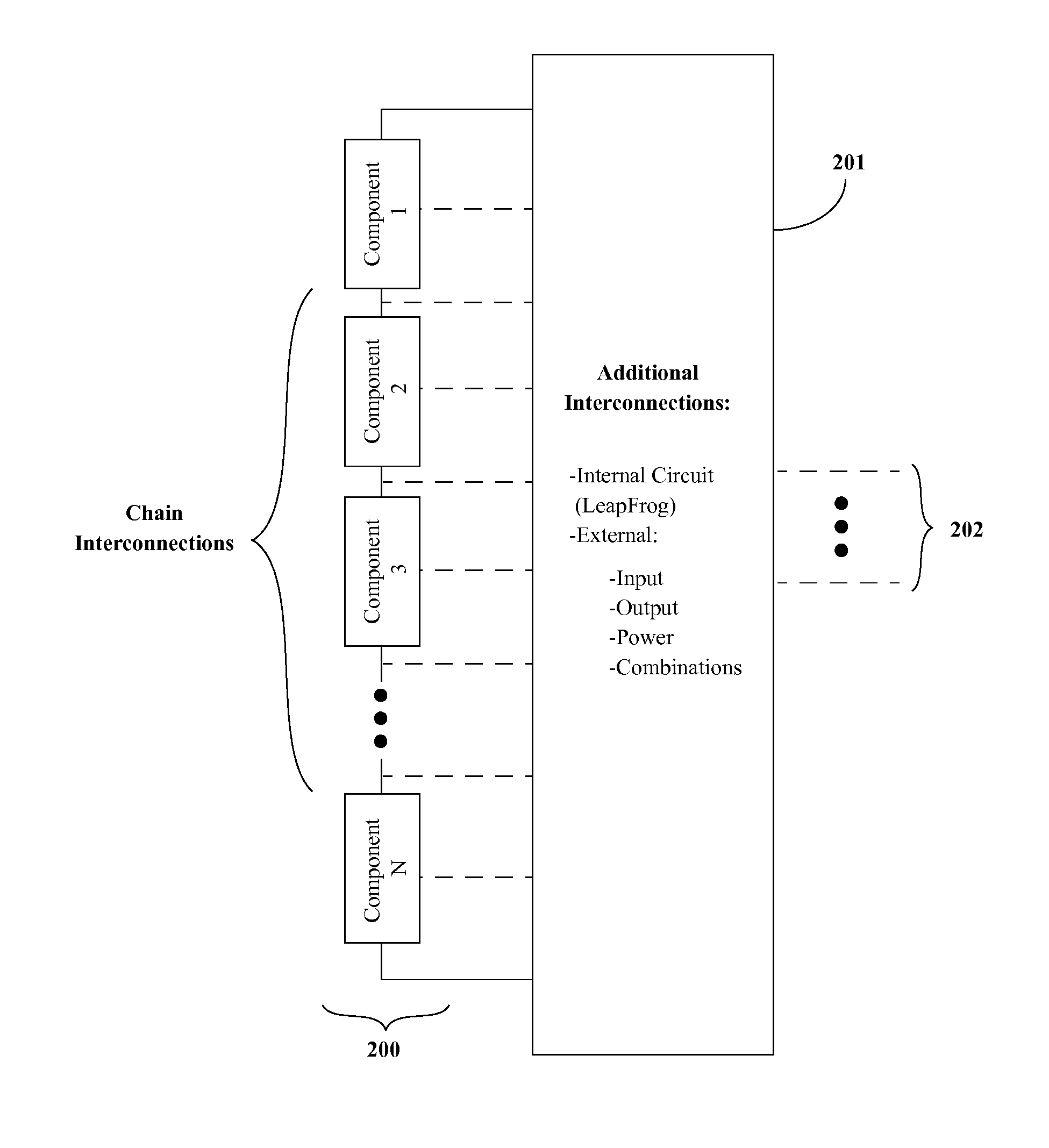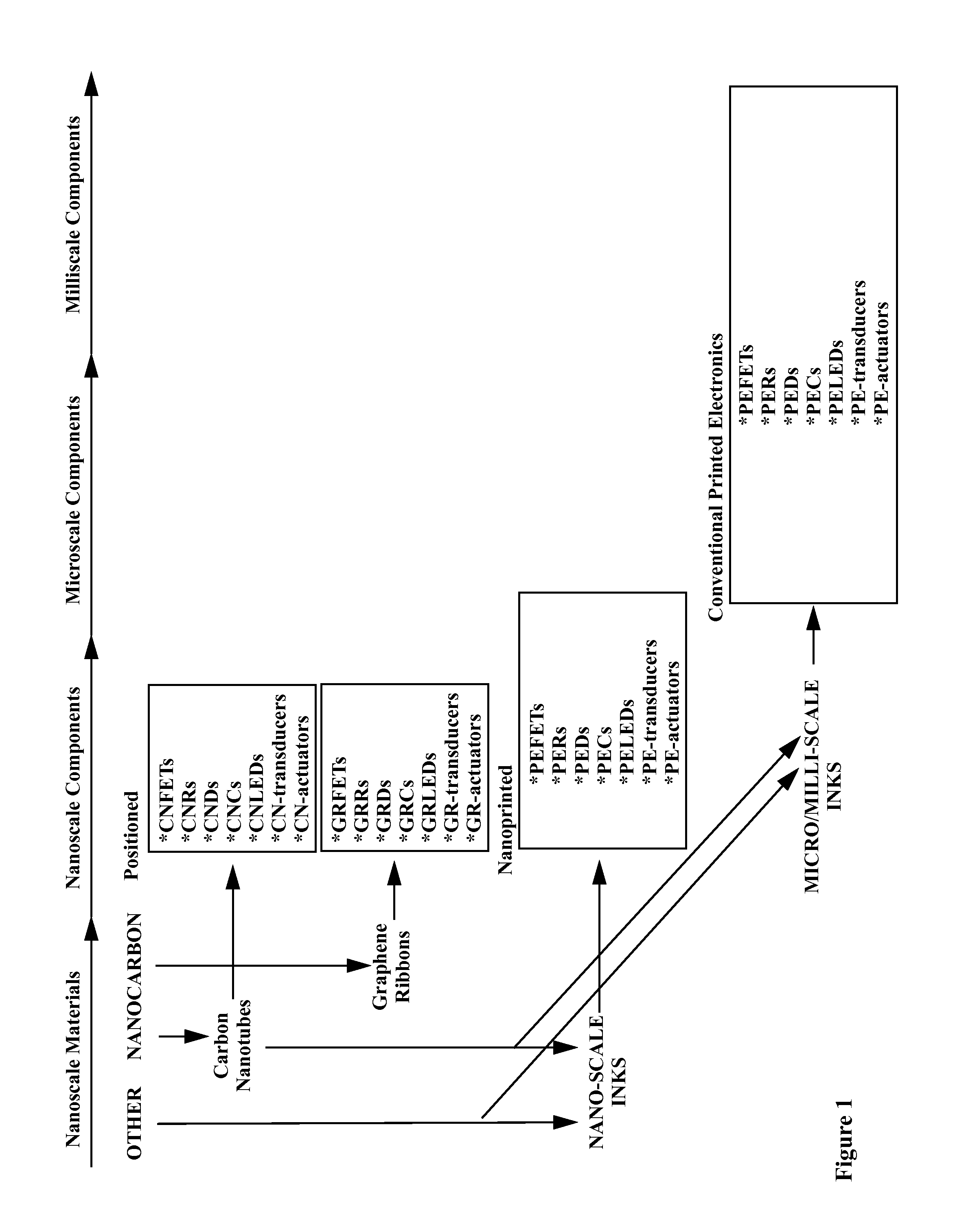Chain/leapfrog circuit topologies and tools for carbon nanotube / graphene nanoribbon nanoelectronics, printed electronics, polymer electronics, and their confluences
a carbon nanotube and graphene nanoribbon technology, applied in the field of nanoelectronics, nanoelectronics, semiconducting polymer electronics, and printed electronics, can solve the problems of unrealized commercial promise of nanoelectronics, lack of viable analog capabilities for interfacing nanosensors and nanoactuators with “outside world, and complex fabrication, etc., to facilitate the use of traditional scale printed electronics
- Summary
- Abstract
- Description
- Claims
- Application Information
AI Technical Summary
Benefits of technology
Problems solved by technology
Method used
Image
Examples
Embodiment Construction
[0078]In the following detailed description, reference is made to the accompanying drawing figures which form a part hereof, and which show by way of illustration specific embodiments of the invention. It is to be understood by those of ordinary skill in this technological field that other embodiments can be utilized, and structural, electrical, as well as procedural changes can be made without departing from the scope of the present invention. Wherever possible, the same element reference numbers will be used throughout the drawings to refer to the same or similar parts.
[0079]The present invention addresses these three additional problems with (1) methods and (2) software-based systems for executing on one or more computers. These methods and software-based systems leverage one or more of:[0080]Use of field effect transistors that can be readily fabricated from placement of an insulated conductor proximate to the strip, tube, or ribbon of semiconducting material arranged to span th...
PUM
 Login to View More
Login to View More Abstract
Description
Claims
Application Information
 Login to View More
Login to View More - R&D
- Intellectual Property
- Life Sciences
- Materials
- Tech Scout
- Unparalleled Data Quality
- Higher Quality Content
- 60% Fewer Hallucinations
Browse by: Latest US Patents, China's latest patents, Technical Efficacy Thesaurus, Application Domain, Technology Topic, Popular Technical Reports.
© 2025 PatSnap. All rights reserved.Legal|Privacy policy|Modern Slavery Act Transparency Statement|Sitemap|About US| Contact US: help@patsnap.com



